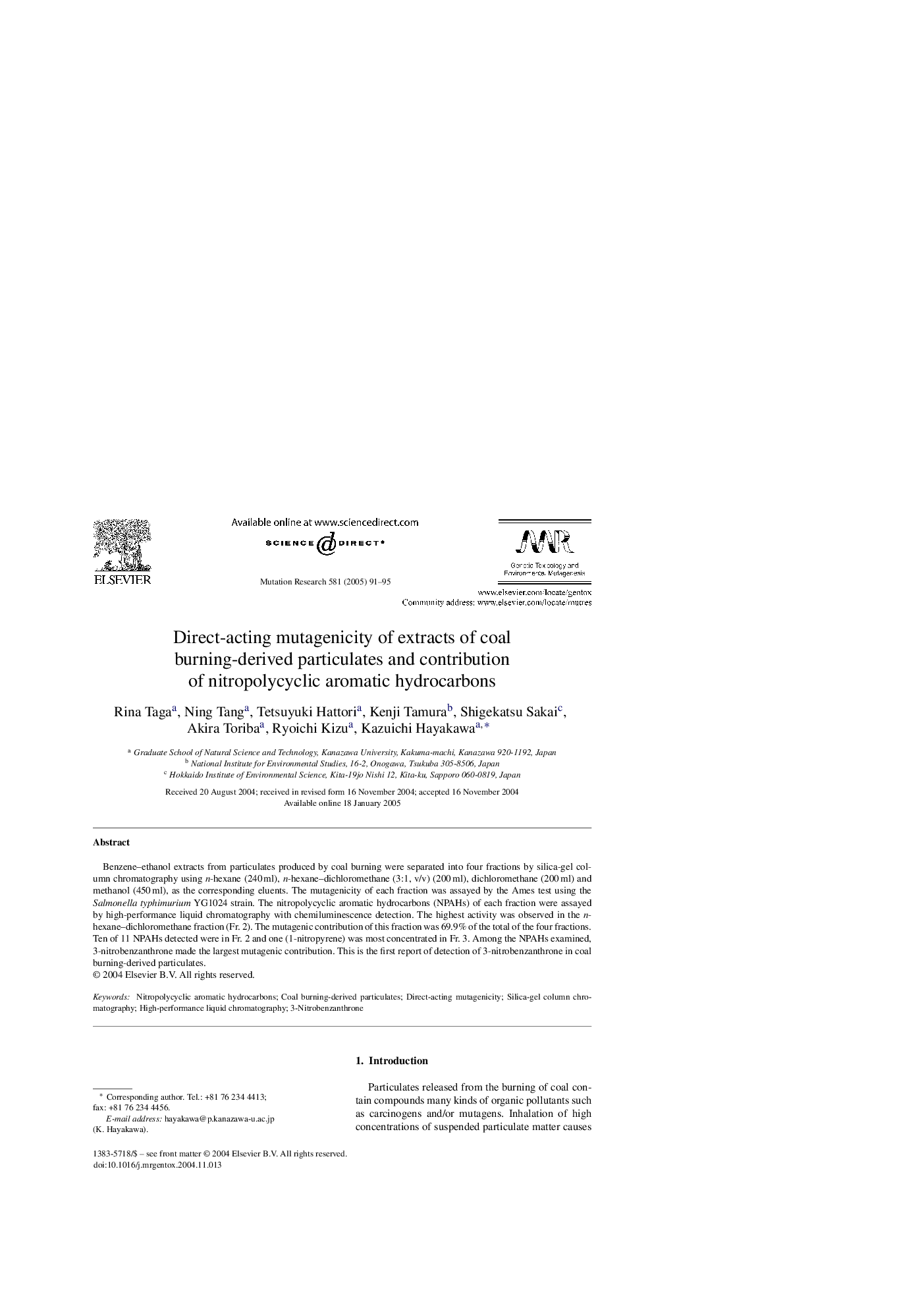| Article ID | Journal | Published Year | Pages | File Type |
|---|---|---|---|---|
| 9910155 | Mutation Research/Genetic Toxicology and Environmental Mutagenesis | 2005 | 5 Pages |
Abstract
Benzene-ethanol extracts from particulates produced by coal burning were separated into four fractions by silica-gel column chromatography using n-hexane (240Â ml), n-hexane-dichloromethane (3:1, v/v) (200Â ml), dichloromethane (200Â ml) and methanol (450Â ml), as the corresponding eluents. The mutagenicity of each fraction was assayed by the Ames test using the Salmonellatyphimurium YG1024 strain. The nitropolycyclic aromatic hydrocarbons (NPAHs) of each fraction were assayed by high-performance liquid chromatography with chemiluminescence detection. The highest activity was observed in the n-hexane-dichloromethane fraction (Fr. 2). The mutagenic contribution of this fraction was 69.9% of the total of the four fractions. Ten of 11 NPAHs detected were in Fr. 2 and one (1-nitropyrene) was most concentrated in Fr. 3. Among the NPAHs examined, 3-nitrobenzanthrone made the largest mutagenic contribution. This is the first report of detection of 3-nitrobenzanthrone in coal burning-derived particulates.
Keywords
Related Topics
Life Sciences
Biochemistry, Genetics and Molecular Biology
Cancer Research
Authors
Rina Taga, Ning Tang, Tetsuyuki Hattori, Kenji Tamura, Shigekatsu Sakai, Akira Toriba, Ryoichi Kizu, Kazuichi Hayakawa,
